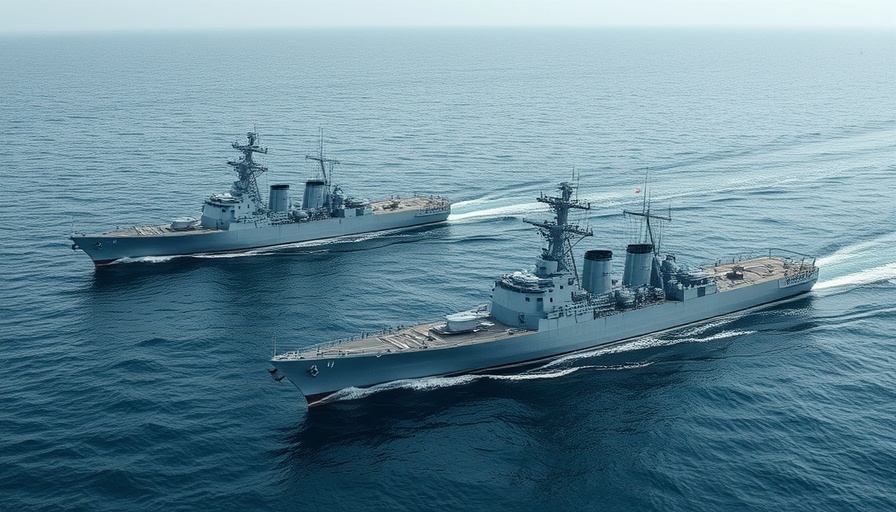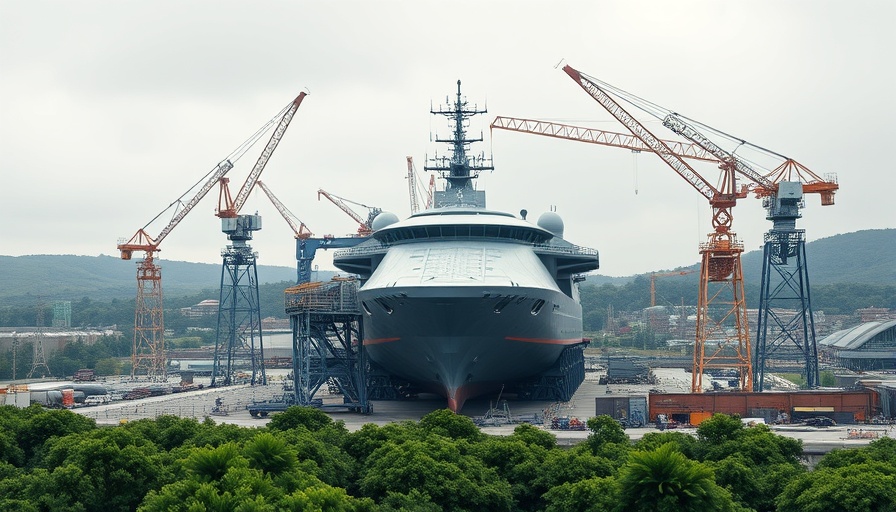
Canada Eyes Advanced Submarine Technologies
As Canada takes significant strides in upgrading its naval capabilities, the recent shortlist announcement of Thyssenkrupp Marine Systems and Hanwha Ocean for its new submarine fleet signifies a pivotal moment in the nation's defense strategy. With both companies boasting cutting-edge technologies and established reputations, the competition to provide Canada with up to 12 advanced submarines promises to transform naval operations in the Arctic and beyond.
The Crucial Role of Submarines
Submarines are critical to modern naval warfare, providing stealth and versatility in various maritime environments. Canada's current Victoria-class submarines, facing decommissioning in the mid-2030s, necessitate a timely replacement. The new fleet, equipped to navigate under ice and operate effectively in harsh conditions, is integral for Canadian defense, particularly in the Arctic—a region of growing strategic importance.
Industry Engagement to Boost Local Economy
The Canadian government has emphasized the importance of leveraging this procurement process to generate economic benefits for local industries. By collaborating with Canadian firms, both shortlisted companies aim to infuse the domestic market with jobs and skill development. According to a Public Services and Procurement Canada statement, these engagements are crucial for advancing the procurement process while benefitting the wider Canadian marine and defense sectors.
Projected Timeline and Economic Considerations
With the expected contract award by 2028, the timeline for acquiring these state-of-the-art submarines poses both challenges and opportunities. Estimates suggest a budget exceeding $60 billion CAD, a sum that necessitates careful fiscal planning and strategic industry partnerships. The shortlisting of Hanwha Ocean's KSS-III and Thyssenkrupp's Type 212CD submarines points to an increasingly competitive global defense market that underscores the urgency for Canada to advance its maritime capabilities.
Innovation and Technological Advancements
In the quest for modern, reliable submarines, technological innovations play a central role. Both shortlisted firms have committed to offering advanced systems designed for efficient under-ice operations, aligning with Canada's unique operational requirements. As observed by Oliver Burkhard, CEO of Thyssenkrupp Marine Systems, these submarines are ideally suited for Arctic missions, reflecting a growing focus on operational readiness in complex environments.
Preparing for Global Partnerships
The potential alliance with these global manufacturers not only enhances Canada’s naval capabilities but could also signify a broader collaborative approach in military advancements. By emphasizing partnerships with established defense companies, Canada is positioning itself on an international stage where defense interoperability and technological exchanges could yield long-term benefits.
Public Insight and Future Implications
Public response to these developments reveals a mixture of optimism and concern regarding the heavy financial investment involved in procuring a contemporary submarine fleet. Citizens are eager for enhanced national security but are equally wary of the budgetary implications. This sentiment underscores the need for transparent communication about the strategic importance and expected outcomes of such a significant defense procurement effort.
As Canada braces for the future of its submarine fleet, the focus remains on fostering cooperation with global partners while simultaneously bolstering its domestic shipbuilding industry. The Canadian government’s strategic foresight in this endeavor may well define the nation’s maritime security and economic resilience in the years to come.
 Add Row
Add Row  Add
Add 




Write A Comment